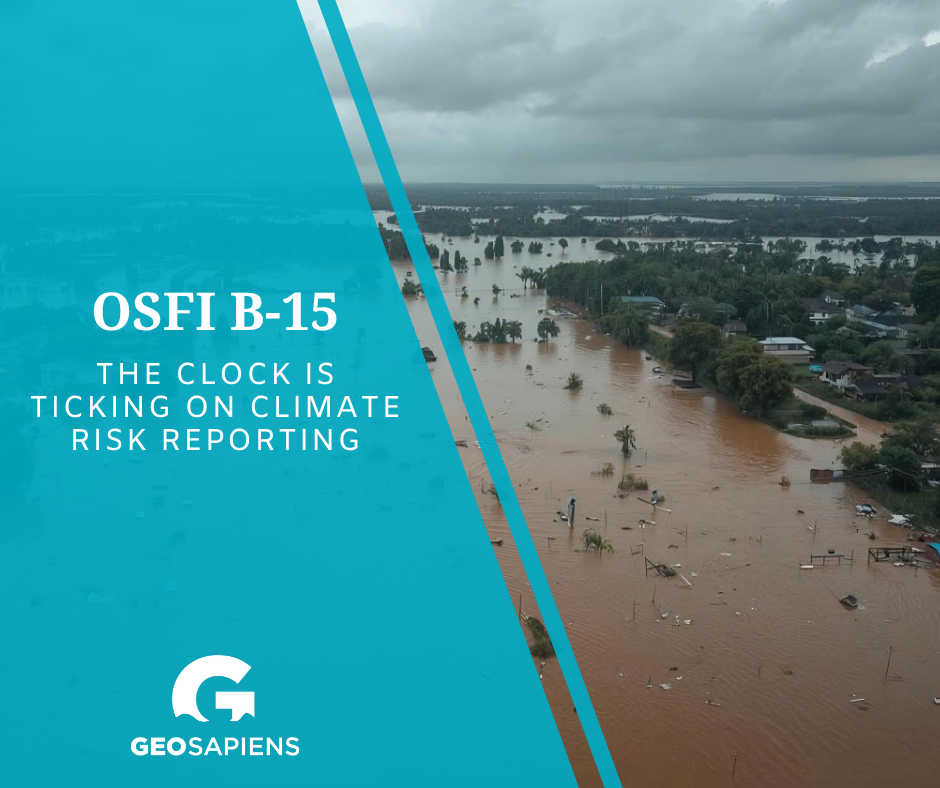OSFI B-15 : The Clock Is Ticking on Climate Risk Reporting
- Geosapiens

- Oct 22
- 2 min read
OSFI Guideline B-15 on Climate Risk Management is no longer on the horizon, it’s here, and deadlines are closing in fast. The first wave of implementation hit Domestic Systemically Important Banks (D-SIBs) and Internationally Active Insurance Groups (IAIGs) at their fiscal year-end 2024.
Next up: all other federally regulated financial institutions (FRFIs), including trust and loan companies, as well as life and P&C insurers, must comply by the end of 2025 (excluding foreign bank branches).
But this isn’t just another regulatory checkbox. Within the next few months, FRFIs are expected to demonstrate readiness by establishing robust governance frameworks and processes to identify, manage, and disclose climate-related risks.
The Biggest Challenge: Quantifying Physical Climate Risks
OSFI now expects FRFIs to:
Collect and leverage reliable, location-specific data on physical climate risks, especially those tied to the geophysical location of exposures.
Disclose the amount and percentage of assets and activities vulnerable to climate-related physical risks.
Conduct climate scenario analyses to evaluate how these risks could impact their business models and strategies.

How Geosapiens Can Help
At Geosapiens, we empower financial institutions and insurers to meet OSFI B-15 and international disclosure standards such as TCFD, IFRS S2, and ISSB, through precise, actionable and science-driven climate intelligence.
With our climate modeling solution, financial institutions and insurers can:
Access regulatory-ready climate risk data, fully aligned with OSFI B-15, ensuring reporting meets supervisory expectations.
Gain property- and portfolio-level insights for flood and wildfire risks across Canada, helping quantify exposure and prioritize high-risk assets.
Integrate risk intelligence into decision-making embedding hazard and loss data directly into enterprise risk, underwriting, lending, and investment workflows.
Run stress testing and scenario analyses supporting resilience planning, capital adequacy assessments, and long-term strategic evaluations under multiple climate pathways.
Deliver transparent, defensible disclosures with geospatial dashboards, APIs, and analytics designed to streamline reporting for regulators, boards, and investors.
Guideline B-15 represents both a challenge and an opportunity, a catalyst for better risk governance, informed decision-making, and long-term strategic advantage.
Contact us to explore how Geosapiens can help you turn climate compliance into competitive strength







Comments